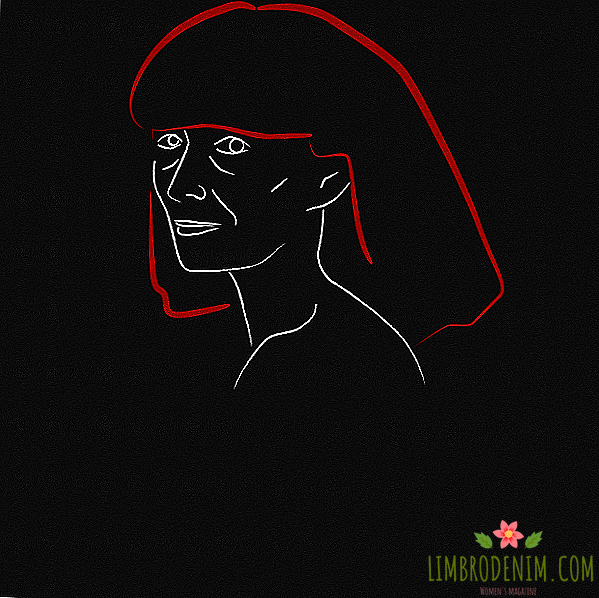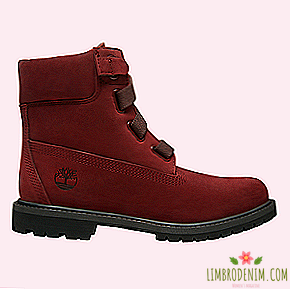One touch: Why Instagram will replace online shopping
WHEN at the end of the 1990s NET-A-PORTER.COM FOUNDER Natalie Messene came up with the idea to create an online space where people could buy clothes, many were skeptical. Representatives of luxury brands believed that this format of shopping eliminated the status of things and their customers would not exchange a visit to a familiar boutique, accompanied by a mandatory glass of champagne, for soulless online purchases. Nearly twenty years have passed, and Net-A-Porter.com has become one of the most successful fashion retailers, and online shopping is capturing all new venues - for example, instagram.
Last November, the application, in conjunction with twenty American brands, including Kate Spade and Warby Parker, launched a new feature in test mode - the ability to buy items from a photo simply by clicking on the "Buy" button. If before you had to go to the desired page through an active link in your profile, the improved functionality promises to make the shopping process many times easier and faster: I saw, clicked, bought - after all, Instagram is now focusing on the development of fashion trends. The company took this course a couple of years ago when it appointed Eva Chen, the former chief editor of Lucky magazine, director for partner projects with fashion brands, literally creating a new position for her. The decision, it must be said, is strategically correct: a social network for which the visual will always come first, is an ideal platform for fashion industry players.
Indeed, because of the latest innovations in the application, it seems that from a social network that works on the principle of your personal photo album, the instagram turns into a full-fledged business platform. To take at least the function of publishing several photos in one post - doesn’t it remind a gallery of pictures in any online store, which is necessary to show things from all angles? Small brands also realized in time that it doesn’t matter to the modern buyer whether you have a full-fledged shopping platform or not - it’s enough to see the thing you like in the tape and buy it right there without making any extra movements. This is actively used, for example, by those who sell vintage clothing: if earlier they had to create their own eBay or Etsy corner, now an instagram account is enough.
In order to think about the purchase, you have about a few seconds - to live, and the dream dress or authentic jeans of the 1950s have already been sent to you by mail.
Profiles like courtyard_la, the___zoo, iamthat_shop publish several new items every day. The purchase scheme is nowhere simpler: the first person who writes his zip code in the comments to the photo gets a bill that must be paid within an hour, otherwise the lot will go to another buyer. Everything scatters in a matter of minutes: if you view at least a dozen of fresh publications in these stores, the “Sold” mark will be in front of most of them. That is, in order to think about a purchase, you have about a few seconds — you know, and the dream dress or authentic jeans of the 1950s has already been sent to you by mail. The only problem is that if after a couple of days you decide that you are still in a hurry with the purchase, you cannot return the goods - these are the rules.
Not surprisingly, some retailers in this situation gradually abandon the traditional formats, leaving entirely on instagram. Say, the American online store NA NIN has a full-fledged website, where the little-known but very nice brands like Loq or Ace & Jig are represented. In this section of the vintage, which was once the main, is now fully functioning in the vastness of instagram. Sellers give such a solid format pluses: no problems with the development of the site, with a constant flow of new supplies, you do not need to spend time and money on catalogs, you can take photos on iPhone in daylight, and the flow of buyers is much more impressive (Na Nin Vintage has almost 66 thousand subscribers).
Not only the shops appreciated the beauty of trading on the social network: personal accounts through which people sell unnecessary or used things, are also gaining popularity. A kind of analogue sites like Vestiaire Collective or TheRealReal - very successful today online sites that have made the resale of branded items a truly fashionable phenomenon. A couple of years ago, Style Caster released a material that tells about shopping through a hashtag: you simply type #ShopMyCloset or #Instashop into the search field - and the system gives you thousands of suitable posts. The article provides an example of the story of Ashley Steenhoven, owner of an instagram store Bloom Designer Finds, which in just a few months she unleashed so much that she now sells fifty items a day. One can only imagine how much this direction will reach in a couple of years.
Everything leads to the fact that brands will be able to abandon the usual online stores and fully go to instagram
According to Eurostat, in 2016, two thirds of Internet users made purchases online; of these, people most often bought clothes from 16 to 24 years old. Almost half of instagram users are people of the same age (as of April 2017). This is a very revealing result, not concealed from the eyes of big brands - there is no doubt that they have already taken it into circulation. Active young users set the tone for the entire social network, according to whose habits and expectations it adapts. Shopping via instagram is a good example of the "see now buy now" phenomenon that has been spoken about in the fashion community for the past year. After several months of testing, Instagram announced the full launch of direct shopping in the US, so that soon we should expect the distribution of this feature in other countries.
Some luxury companies are still skeptical about the opportunity to buy shoes for a thousand dollars or bags of rare leather at the same time scrolling someone's breakfasts and self Gigi Hadid, but few people believed in online stores. To stay afloat, they will have to join the game, the rules of which have long been dictated not by themselves, but by their customers - those who want to get everything at once, right now, and preferably with delivery within a couple of hours. At least, everything leads to the fact that in the long term brands will be able to completely abandon the usual online stores and will completely go to instagram - starting with all the same picture gallery in one post and ending with the option of enlarging photos, allowing you to examine all the details in detail.
This format of shopping has, of course, a downside. While traditional boutiques and online retailers invented how to add an element of entertainment to their spaces to lure and retain customers, it turned out that simply connecting the "Buy" button in the account and customers will be satisfied. The thing is that instagram taught us to read information in a few seconds and to make a decision just as quickly, which is what brands and stores use to build their business in this social network. While some companies advocate conscious consumption and create entire communities around themselves, others rely on speed: faster, higher, more sales. Which, in turn, leaves an imprint on the quality level of the things themselves: who cares about bad fabrics and uneven seam, if the photo looks normal? However, this is another story, and we have yet to deal with this.





